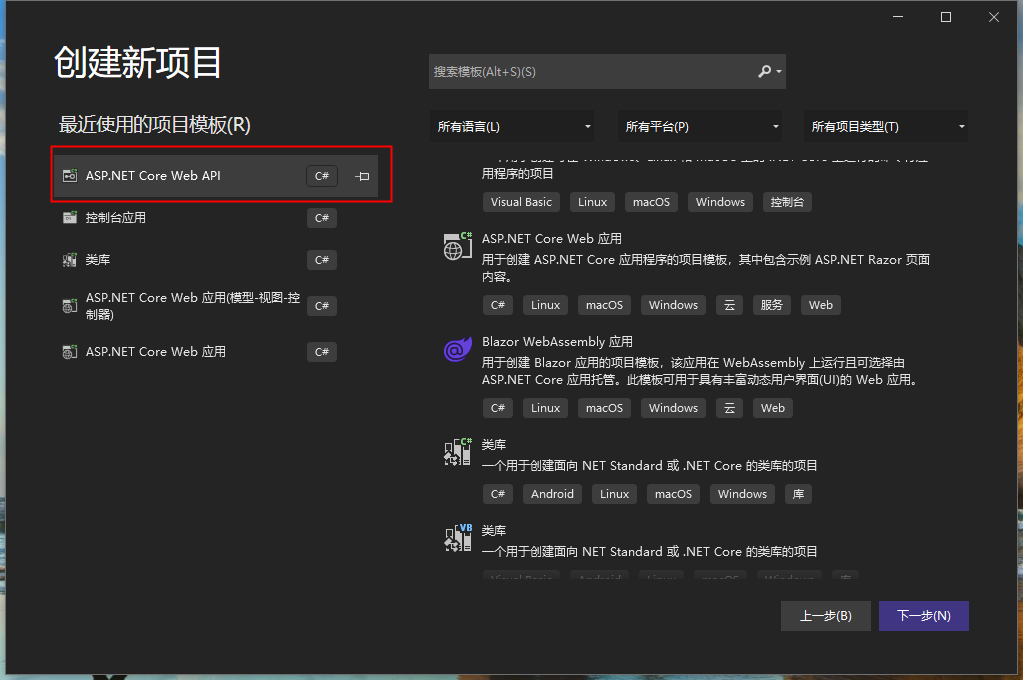供参考,我的代码:
public class DropBoxClient : OAuthClient { public static readonly ServiceProviderDescription DropBoxServiceDescription = new ServiceProviderDescription { RequestTokenEndpoint = new MessageReceivingEndpoint("https://api.dropBox.com/1/oauth/request_token",HttpDeliveryMethods.GetRequest | HttpDeliveryMethods.AuthorizationHeaderRequest),UserAuthorizationEndpoint = new MessageReceivingEndpoint("https://www.dropBox.com/1/oauth/authorize",AccesstokenEndpoint = new MessageReceivingEndpoint("https://api.dropBox.com/1/oauth/access_token",TamperProtectionElements = new ITamperProtectionChannelBindingElement[] { new PlaintextSigningBindingElement() } }; public DropBoxClient(string consumerKey,string consumerSecret) : this(consumerKey,consumerSecret,new AuthenticationOnlyCookieOAuthTokenManager()) { } public DropBoxClient(string consumerKey,string consumerSecret,IOAuthTokenManager tokenManager) : base("dropBox",DropBoxServiceDescription,new SimpleConsumerTokenManager(consumerKey,tokenManager)) { } protected override DotNetopenAuth.AspNet.AuthenticationResult VerifyAuthenticationCore(DotNetopenAuth.OAuth.Messages.AuthorizedTokenResponse response) { var profileEndpoint = new MessageReceivingEndpoint("https://api.dropBox.com/1/account/info",HttpDeliveryMethods.GetRequest); HttpWebRequest request = this.WebWorker.PrepareAuthorizedRequest(profileEndpoint,response.Accesstoken); try { using (WebResponse profileResponse = request.GetResponse()) { using (Stream profileResponseStream = profileResponse.GetResponseStream()) { using (StreamReader reader = new StreamReader(profileResponseStream)) { string jsonText = reader.ReadToEnd(); JavaScriptSerializer jss = new JavaScriptSerializer(); dynamic jsonData = jss.DeserializeObject(jsonText); Dictionary<string,string> exTradata = new Dictionary<string,string>(); exTradata.Add("displayName",jsonData.display_name ?? "UnkNown"); exTradata.Add("userId",jsonData.uid ?? "UnkNown"); return new DotNetopenAuth.AspNet.AuthenticationResult(true,ProviderName,exTradata["userId"],exTradata["displayName"],exTradata); } } } } catch (WebException ex) { using (Stream s = ex.Response.GetResponseStream()) { using (StreamReader sr = new StreamReader(s)) { string body = sr.ReadToEnd(); return new DotNetopenAuth.AspNet.AuthenticationResult(new Exception(body,ex)); } } } } }
解决方法
我还会在这里复制并粘贴完整帖子:
DotNetopenAuth.AspNet 401未经授权的错误和持久访问令牌秘密修复
在设计我们的云电子书管理器QuietThyme时,我们知道每个人都讨厌像我们一样创建新帐户.我们开始寻找可以利用社交登录的OAuth和OpenId库.我们最终使用DotNetopenAuth.AspNet库进行用户身份验证,因为它支持Microsoft,Twitter,Facebook,LinkedIn和Yahoo等许多其他人.虽然我们有一些问题需要设置,但最后我们只需要进行一些小的自定义来完成大部分工作(在previous coderwall post中描述).我们注意到,与其他所有人不同,LinkedIn客户端不会进行身份验证,从DotNetopenAuth返回401 Unauthorized Error.很快就发现这是由于签名问题,在查看源代码后,我们能够确定检索到的Accesstoken机密未与经过身份验证的配置文件信息请求一起使用.
它实际上是有道理的,OAuthClient类不包含检索的访问令牌秘密的原因是它通常不需要用于身份验证,这是ASP.NET OAuth库的主要目的.
我们需要在用户登录后对api进行身份验证请求,以检索一些标准配置文件信息,包括电子邮件地址和全名.我们能够通过暂时使用InMemoryOAuthTokenManager来解决这个问题.
public class LinkedInCustomClient : OAuthClient
{
private static XDocument LoadXDocumentFromStream(Stream stream)
{
var settings = new XmlReaderSettings
{
MaxCharactersInDocument = 65536L
};
return XDocument.Load(XmlReader.Create(stream,settings));
}
/// Describes the OAuth service provider endpoints for LinkedIn.
private static readonly ServiceProviderDescription LinkedInServiceDescription =
new ServiceProviderDescription
{
AccesstokenEndpoint =
new MessageReceivingEndpoint("https://api.linkedin.com/uas/oauth/accesstoken",HttpDeliveryMethods.PostRequest),RequestTokenEndpoint =
new MessageReceivingEndpoint("https://api.linkedin.com/uas/oauth/requestToken?scope=r_basicprofile+r_emailaddress",UserAuthorizationEndpoint =
new MessageReceivingEndpoint("https://www.linkedin.com/uas/oauth/authorize",TamperProtectionElements =
new ITamperProtectionChannelBindingElement[] { new HmacSha1SigningBindingElement() },//ProtocolVersion = ProtocolVersion.V10a
};
private string ConsumerKey { get; set; }
private string ConsumerSecret { get; set; }
public LinkedInCustomClient(string consumerKey,string consumerSecret)
: this(consumerKey,new AuthenticationOnlyCookieOAuthTokenManager()) { }
public LinkedInCustomClient(string consumerKey,IOAuthTokenManager tokenManager)
: base("linkedIn",LinkedInServiceDescription,tokenManager))
{
ConsumerKey = consumerKey;
ConsumerSecret = consumerSecret;
}
//public LinkedInCustomClient(string consumerKey,string consumerSecret) :
// base("linkedIn",consumerKey,consumerSecret) { }
/// Check if authentication succeeded after user is redirected back from the service provider.
/// The response token returned from service provider authentication result.
[SuppressMessage("Microsoft.Design","CA1031:DoNotCatchGeneralExceptionTypes",Justification = "We don't care if the request fails.")]
protected override AuthenticationResult VerifyAuthenticationCore(AuthorizedTokenResponse response)
{
// See here for Field Selectors API http://developer.linkedin.com/docs/DOC-1014
const string profileRequestUrl =
"https://api.linkedin.com/v1/people/~:(id,first-name,last-name,headline,industry,summary,email-address)";
string accesstoken = response.Accesstoken;
var profileEndpoint =
new MessageReceivingEndpoint(profileRequestUrl,HttpDeliveryMethods.GetRequest);
try
{
InMemoryOAuthTokenManager imoatm = new InMemoryOAuthTokenManager(ConsumerKey,ConsumerSecret);
imoatm.ExpireRequestTokenAndStoreNewAccesstoken(String.Empty,String.Empty,accesstoken,(response as ITokenSecretContainingMessage).TokenSecret);
WebConsumer w = new WebConsumer(LinkedInServiceDescription,imoatm);
HttpWebRequest request = w.PrepareAuthorizedRequest(profileEndpoint,accesstoken);
using (WebResponse profileResponse = request.GetResponse())
{
using (Stream responseStream = profileResponse.GetResponseStream())
{
XDocument document = LoadXDocumentFromStream(responseStream);
string userId = document.Root.Element("id").Value;
string firstName = document.Root.Element("first-name").Value;
string lastName = document.Root.Element("last-name").Value;
string userName = firstName + " " + lastName;
string email = String.Empty;
try
{
email = document.Root.Element("email-address").Value;
}
catch(Exception)
{
}
var exTradata = new Dictionary<string,string>();
exTradata.Add("accesstoken",accesstoken);
exTradata.Add("name",userName);
exTradata.AddDataifNotEmpty(document,"headline");
exTradata.AddDataifNotEmpty(document,"summary");
exTradata.AddDataifNotEmpty(document,"industry");
if(!String.IsNullOrEmpty(email))
{
exTradata.Add("email",email);
}
return new AuthenticationResult(
isSuccessful: true,provider: this.ProviderName,providerUserId: userId,userName: userName,exTradata: exTradata);
}
}
}
catch (Exception exception)
{
return new AuthenticationResult(exception);
}
}
}
这是从Microsoft编写的基础LinkedIn客户端更改的部分.
InMemoryOAuthTokenManager imoatm = new InMemoryOAuthTokenManager(ConsumerKey,ConsumerSecret); imoatm.ExpireRequestTokenAndStoreNewAccesstoken(String.Empty,(response as ITokenSecretContainingMessage).TokenSecret); WebConsumer w = new WebConsumer(LinkedInServiceDescription,imoatm); HttpWebRequest request = w.PrepareAuthorizedRequest(profileEndpoint,accesstoken);
不幸的是,IOAuthTOkenmanger.ReplaceRequestTokenWithAccesstoken(..)方法直到VerifyAuthentication()方法返回后才会执行,因此我们必须创建一个新的TokenManager,并使用我们刚刚检索的Accesstoken凭据创建一个WebConsumer和HttpWebRequest.
这解决了我们简单的401 Unauthorized问题.
现在,如果您想在身份验证过程之后保留Accesstoken凭据,会发生什么?例如,这对于DropBox客户端非常有用,您希望将文件同步到用户的DropBox.问题可以追溯到编写AspNet库的方式,假设DotNetopenAuth仅用于用户身份验证,而不是用作进一步OAuth api调用的基础.值得庆幸的是,修复非常简单,我所要做的只是修改基本的AuthetnicationOnlyCookieOAuthTokenmanger,以便ReplaceRequestTokenWithAccesstoken(..)方法存储新的Accesstoken密钥和秘密.
/// <summary>
/// Stores OAuth tokens in the current request's cookie
/// </summary>
public class PersistentCookieOAuthTokenManagerCustom : AuthenticationOnlyCookieOAuthTokenManager
{
/// <summary>
/// Key used for token cookie
/// </summary>
private const string TokenCookieKey = "OAuthTokenSecret";
/// <summary>
/// Primary request context.
/// </summary>
private readonly HttpContextBase primaryContext;
/// <summary>
/// Initializes a new instance of the <see cref="AuthenticationOnlyCookieOAuthTokenManager"/> class.
/// </summary>
public PersistentCookieOAuthTokenManagerCustom() : base()
{
}
/// <summary>
/// Initializes a new instance of the <see cref="AuthenticationOnlyCookieOAuthTokenManager"/> class.
/// </summary>
/// <param name="context">The current request context.</param>
public PersistentCookieOAuthTokenManagerCustom(HttpContextBase context) : base(context)
{
this.primaryContext = context;
}
/// <summary>
/// Gets the effective HttpContext object to use.
/// </summary>
private HttpContextBase Context
{
get
{
return this.primaryContext ?? new HttpContextwrapper(HttpContext.Current);
}
}
/// <summary>
/// Replaces the request token with access token.
/// </summary>
/// <param name="requestToken">The request token.</param>
/// <param name="accesstoken">The access token.</param>
/// <param name="accesstokenSecret">The access token secret.</param>
public new void ReplaceRequestTokenWithAccesstoken(string requestToken,string accesstoken,string accesstokenSecret)
{
//remove old requestToken Cookie
//var cookie = new HttpCookie(TokenCookieKey)
//{
// Value = string.Empty,// Expires = DateTime.UtcNow.AddDays(-5)
//};
//this.Context.Response.Cookies.Set(cookie);
//Add new Accesstoken + secret Cookie
StoreRequestToken(accesstoken,accesstokenSecret);
}
}
然后要使用此PersistentCookieOAuthTokenManager,您需要做的就是修改您的DropBoxClient构造函数,或者您想要保留Accesstoken Secret的任何其他客户端
public DropBoxCustomClient(string consumerKey,new PersistentCookieOAuthTokenManager()) { } public DropBoxCustomClient(string consumerKey,IOAuthTokenManager tokenManager) : base("dropBox",DropBoxServiceDescription,tokenManager)) {}


